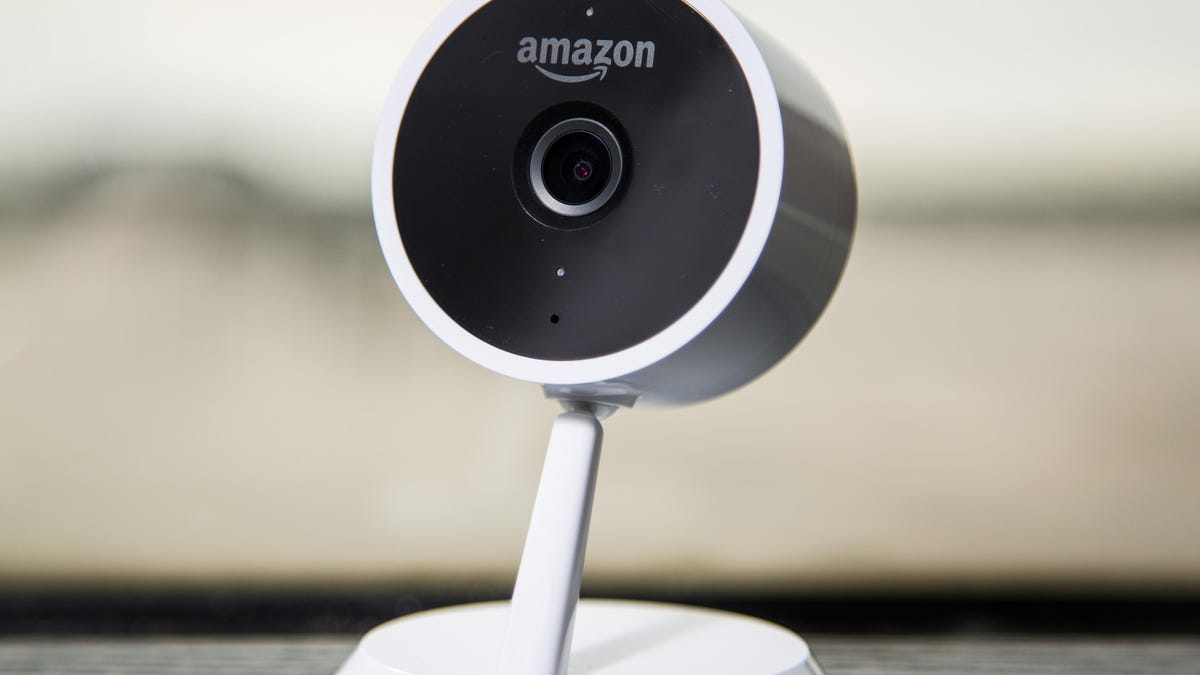 Why You Can Trust CNET
Why You Can Trust CNET Amazon Cloud Cam: 7 tips and tricks to get the most out of it
Amazon's Cloud Cam home security camera is full of features; you just have to know where to look.

Amazon's Cloud Cam is affordable and easy to use. It's one of those devices you can, more or less, set up and forget about. But between continued updates and the ease of skipping past customizing how it works, it's worth a few minutes of your time to check out the seven tips and tricks we've outlined below.
Livestream from the mobile app
Amazon offers a Cloud Cam mobile app for iOS and Android. The app is used for initial setup, settings, alerts and livestream viewing.
Via the live feed, you can enable sound to hear what's going on with a tap on the speaker, or long-press on the microphone to talk through the camera's speaker.
Online streaming
Recently, Amazon announced it was adding the ability to view your camera(s) livestream with a web browser. Web viewing is a feature the Cloud Cam was missing at its launch.
To view your camera from your desktop or laptop computer, visit cloudcam.amazon.com and sign into the same Amazon account used for your Cloud Cam.
From there you can view a live view, as well as past clips recorded by your camera.
Alexa integration
Naturally, Amazon has incorporated the Cloud Cam with Alexa and its Echo devices. For example, you can receive motion or person detection alerts on an Echo. Another useful feature is asking Alexa to show one of your camera feeds on a Fire TV .
Try saying something along the lines of "Alexa, show my living room camera" and it should begin streaming on your TV. If you own an Echo Show or Echo Spot , the same command will work with the built-in display.
Echo devices can also alert you to motion or person detection. You'll need to enable the Cloud Cam skill and enable Alexa alerts in both the Cloud Cam app and the Alexa app.
Person detection
Relying solely on motion alerts to keep track of what's going on in your home can lead to a barrage of unnecessary alerts on your phone. With a subscription plan, however, Amazon will also send you person detection alerts. The camera and its software will analyze whatever is causing motion in the field of view and only send notifications when it determines it's a person.
In the Cloud Cam app go to Settings > Notifications and turn off Motion detected.
Customize notifications
Speaking of notifications, it can be annoying receiving an alert every single time the camera picks up motion or sees a person walk by — especially if the camera is in a high traffic area.
Thankfully the Cloud Cam app lets you limit how often it will alert you to new events. In the Cloud Cam app go to Settings > Notifications > Frequency. Select the amount of time you're comfortable passing between alerts, ranging from every event to never.
Motion zones
If your camera has a portion of a window in its field of view or a wall that often has light reflections moving across it, take advantage of motion zones. By adding a zone to the camera's view, it will ignore that specific area whenever there is motion, forgoing any alerts.
In the Cloud Cam app go to Settings > Zones and tap on the preview image to add a zone. This is another feature that Amazon requires a subscription for access to.
Geofencing
When the Cloud Cam is off, it's not monitoring or recording anything that happens in your home. With the camera turned off, it provides peace of mind about sensitive conversations as well as limits the number of alerts you receive. Especially when you are the one that's triggering the camera. To automate when the camera automatically turns on and off, use the Home/Away feature. The feature will use your phone's location to turn the camera on or off depending on where you are.
Go to Settings > Home/Away to turn the feature on and customize how it works.

